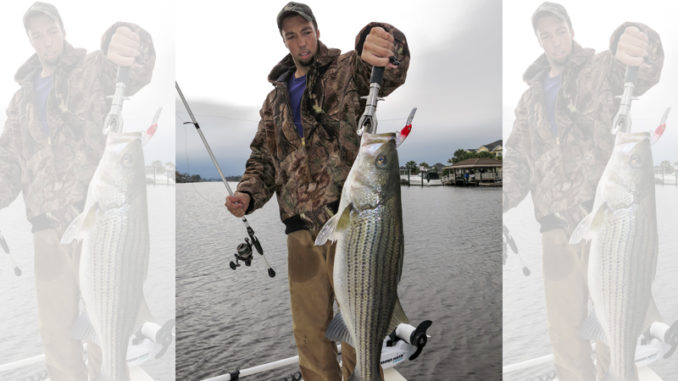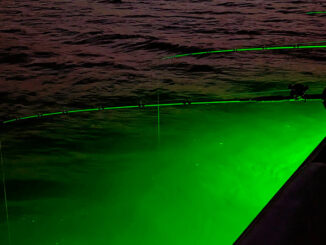
Migrating fish will replace trout, reds as targets
For most South Carolina anglers, the Santee Cooper lakes are the place to catch striped bass. And Lake Moultrie and Lake Marion are two great places to catch inland stripers. But anglers shouldn’t ignore the coastal stripers around Little River.
The 5-mile section of the Atlantic Intracoastal Waterway from North Myrtle Beach to the North Carolina border is the top spot along South Carolina’s coast.
Striped bass are anadromous fish. They swim up freshwater rivers to spawn in the spring and come back to brackish waters or salty waters for the rest of the year. But they don’t always follow the rules. That’s especially true when the waters they inhabit aren’t exactly nature-made, like Little River’s section of the Atlantic Intracoastal Waterway.
The complete dynamics of the Little River striper population is not well understood. Fisheries biologists with the SCDNR believe the stripers that show up in Little River during the winter originate from the Waccamaw and Pee Dee river systems. They show up to feed in the fall when the waters cool. And they become a viable target when the waters cool off in the late fall.
Very few people target stripers in this area
December is the beginning of the hottest time of the year to catch stripers. And Greg Holmes of Fish Skinny Charters is one of the few inshore guides in the area who targets them. He said stripers become available when the bait gets forced into the waterway and the water temperatures drop into the 60s.
“We catch some nice stripers in the waterway when it cools off,” said Holmes (843-241-0594). “We catch some small ones around a pound or so and some jumbos well over 15 pounds.”
Holmes first begins to catch stripers mixed in with his speckled trout and redfish in the waterway.
“I have caught them on the same stuff we fish for trout with. Live shrimp, live minnows, artificial shrimp, topwater plugs, grubs and crankbaits,” he said.
Stripers move into the Little River section of the ICW to feed on anything they can find. Top baits include menhaden, shrimp and mullet.
According to retired SCDNR biologist Scott Lamprecht, stripers are highly mobile and can move a long distance on a daily basis to take advantage of better feeding opportunities. As a result, anglers catch Little River stripers in a variety of places up and down the waterway. But they aren’t always in the same places on a daily basis.
Stripers and specks use the same ambush techniques
While Holmes doesn’t always target stripers specifically, he will put stripers in the boat in places where he is targeting trout around pods of bait.
“Stripers and speckled trout are in a spot for the same reasons: the bait. And places along docks, at the mouth of a creek, or just the edge of the ledge can also be a good place for stripers to ambush bait,” he said.
Little River is peppered with docks and creek mouths to a lesser degree. Holmes catches most of his stripers at creek mouths and at the openings of marinas during periods of the tide with heavy current. The fish will lie on the current seams and ambush bait coming by.
“The opening at Coquina Harbor and the Little River Swing Bridge are two of my favorite places to catch stripers in the winter especially when the tide is running hard,” he said.


